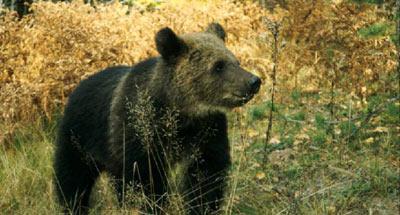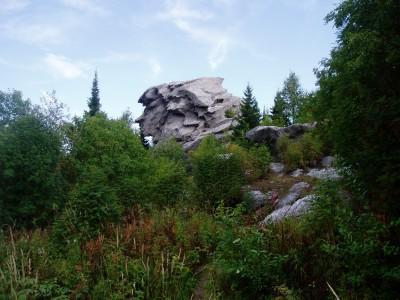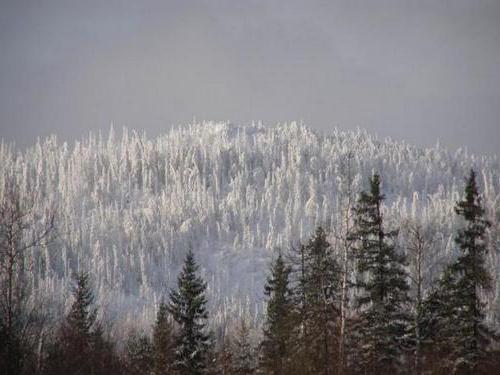The Visimsky Reserve (Sverdlovsk Region) was established in 1946. But a little later - in 1951 - it was closed. After 20 years (1971), the Visimsky Nature Reserve was reopened on an area of more than 9,500 ha. After a certain period, its borders became wider.
General information
The area of this natural zone today is more than 13,500 ha. A significant part of the nature reserve is located in the Middle Urals along the headwaters of the Sulem River. The remaining part occupies a small area of the upper stream of Vogulka. So, the Visim Reserve is a kind of border between the region of Europe and Asia. In 2001, the conservation area received the status of a biosphere reserve. The central estate is located in the river. n. Hang. This is an old mining center, as well as the birthplace of the famous writer D.N. Mamin-Sibiryak.
Purpose of creation
The main prerequisite for the foundation of the reserve was the preservation and study of the natural complex in the Central Ural mountain taiga. The "Regulation on the Visim State Reserve" clearly spells out the main goals and objectives of creating this territory:
- Implementation of security activities in the reserve with all located facilities, as well as compliance with the security regime.
- Conducting comprehensive work on biogeocenological research of the oldest forests of the watershed in the Middle Urals.
- The study of the dynamic development of natural processes in the framework of biocenoses of different derived levels.
- Environmental education among the population, as well as the protection and rational use of existing natural resources.
- Assistance in the qualified training of researchers.
Borders and Territory
The natural zone is indicated by a four-meter clearing with pointers in the form of pillars, full houses. The length of the border itself is 60 km. In 1973, the territory of the Visimsky Reserve underwent some changes, as a result of which it was increased by 3767 hectares in order to preserve and study the primeval massifs of fir and spruce forests along the upper river. Sulem, as well as a section of the watershed ridge. A little later, in accordance with the interests of water supply in the city of Kirovgrad, a rather significant zone (about 400 hectares) was transferred to the flooding of the Sulem reservoir. This area was represented mainly by small grass plantations, horsetail and boggy zones of fir spruce forests, as well as aconite-tall grass birch forests. At the same time, as a compensation, the Visimsky Biosphere Reserve received from the Nevyansk Forestry enterprise 400 hectares in most of the indigenous, perfectly preserved, fern-tall grass fir-tree.
Security mode
The area around the reserve itself is a protected area of 66,100 ha, which is 5 times the area of the biosphere reserve. On the territory of the natural zone there is a ban on fishing, hunting, as well as some restrictions on forestry, that is, standard protective measures work. They are especially important for the normal functioning of large and smaller mammals, whose habitat requires a fairly large space. In addition, at the end of December 1983, some new restrictions were introduced regarding the logging regime in the protected area, which extended to the entire basin of the Sulem reservoir. This is especially important for the Medvezhka River. It flows throughout the biosphere reserve. All other rivers and reservoirs are located outside it, and their basins until now have served as raw material bases for logging enterprises.
Natural monuments
In the Visim Reserve, in addition to the unique natural landscapes, there are numerous natural monuments. In addition to the existing ones, it is planned to open monuments "Mount Raspberry" and "Crane Swamp". The Visimsky Nature Reserve, whose attractions are distributed throughout the territory, includes such objects as the Primeval Forest near the village of Bolshoye Galashki, Starik-Kamen, Kedrovnik on the Notiha River, Outcrops on the Sulem River, Pebble. "
Fauna
Visimsky reserve, animals in which are mainly representatives of the taiga zone, is a truly unique place. On the territory badgers, hares, moose, foxes, martens, squirrels and brown bears feel very comfortable. In quiet and peaceful places near the rivers you can easily find an otter, as well as a wolf or a lynx. They are known to perform the task of forest orderlies. Currently, work is underway in the biosphere reserve to record the number of mammals and their main habitats. Among the birds in the Visimsky reserve are often found hazel grouse, capercaillie, black grouse, as well as a large number of songbirds. During the nesting period in the light forests of mixed and deciduous type, the maximum number of nesting birds is noted. In many territories, finch and green stick are often found . After carrying out the inventory work, a fairly large number of new representatives of the animal world were revealed, such as the European beaver, American mink, common hedgehog and wild boar, as well as several new species of shrews.

The main types of hunting and commercial mammals
Due to acclimatization in the Shali region, which was carried out in 1975, the number of European beavers increased significantly, and in the mid-70s. their populations began to rapidly penetrate the river. Sulem, that is, directly to the Visimsky Reserve itself. In 1979, after registration, 7 settlements of this animal with about 25 representatives were revealed. The marten prefers to settle in more secluded corners of the reserve, most often in deaf forests, its number is not more than 20-25 individuals. Weasel, in turn, settles in more open biotopes - meadow meadows and forest edges. Accordingly, ermine prefers rocky mounds and formations, as well as cluttered river valleys. It is not easy to meet a fox in the biosphere reserve. Most often it can be seen along forest glades and birch forests, in the northern and eastern parts of the reserve. The badger is found quite often, settles in bright birch and aspen forests, along the dry slopes of the mountains. In summer, traces of 6-8 brown bears can be found throughout the protected area of the nature reserve. They leave the den in the first half of April and lie back in hibernation in mid-October. As a rule, local bears are omnivorous, but in comparison with an East Siberian relative they may well be considered vegetarians. Traveling through the territory of the natural complex, you can meet the so-called bear "canteens" - devastated anthills and hornet's nests.

Landscape features
According to the surface and composition of rocks, the territory of the Visimsky reserve can be divided into three parts conditionally: eastern (Sutuksky), central (Kuligsky) and western (Sulemsky). The latter is represented by a hilly-rugged relief and is characterized by relatively low altitudes (350 - 400 m above sea level). The central part is already higher - in some places the foothills reach the level of 473 m.

But the eastern zone of the reserve is characterized by a typical mountainous terrain, the maximum height of which is noted on the city of Bolshoi Sutuk (659 m). Most of the landscapes are represented by mountains. They are decorated with a dividing ridge of the Middle Urals. The mountains of the eastern part of the Visim Biosphere Reserve - the Bolshoi, Maly and Linden Sutuki and Mount Malinovaya - consist of crystalline intrusive rocks of primary and acidic magma, which prevents them from weathering and destruction. Here is a brief summary of what the Visimsky Nature Reserve is like. How to get to the natural area? In general, the path from Yekaterinburg has a length of 120 km. You should go to the village of Visim along the Serov highway.